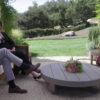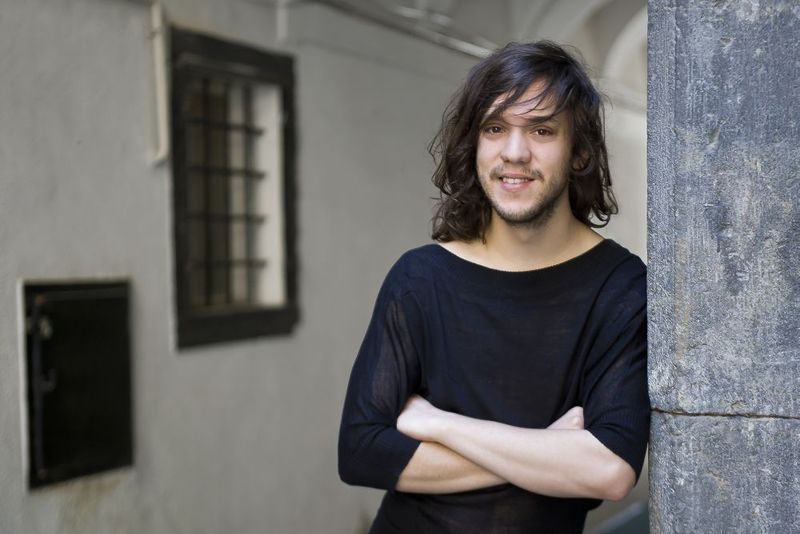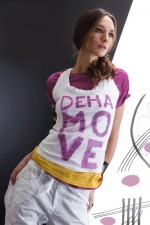Damir Raković with his independent fashion show will be a guest at the Zagreb Fashion Week at the end of this month, which is a special challenge for every designer. The way to get here was not easy for the graduate costume designer, conceptual and creative manager of Atelje Ponorelli and conceptual fashion designer. The thorns that are on this path...
Damir Raković with his independent fashion show will be a guest at the Zagreb Fashion Week at the end of this month, which is a special challenge for every designer. The way to get here was not easy for the graduate costume designer, conceptual and creative manager of Atelje Ponorelli and conceptual fashion designer. Trnje, whom he met along the way, he artistically involved in the emerging collection and thus added the finishing touch to his story in a special way.
Unlike most designers who study at NTF, you just graduated from Profokus School in Zagreb. What convinced the Slovenian designer to study across the border?
It started as early as high school. My parents didn't understand what I wanted to do, they didn't approve of it, and that's why I enrolled in high school of design without their knowledge. They thought I was attending dental school until the first mail arrived from design school. That's how I enrolled myself at the school in Zagreb. I also struggled fairly with school fees, as my parents did not want to contribute anything. Besides, you can't study costume design here, you have to go to Vienna or Zagreb, and since the latter is closer and has a good program, I enrolled there.
You will present your autumn and winter collection with an independent fashion show at the fashion week in Zagreb, which will take place from May 19 to 21. How does a young Slovenian designer get such a great opportunity?
After many years of effort, he works for free and for everyone. Profokus cooperates well with events, which are not few in Croatia, and I got the first opportunity four years ago. My talent was recognized at school, I even found out that I was their best student, so they did a lot for me, especially the principal of the school, Branka Vučetić Atletić. Everything else is a self-initiative. You have to prepare everything yourself, no one just offered you the opportunity. You also organize yourself, prepare all the material, and if they like you, you're in, if not, you're not.
You're one of those designers who doesn't draw inspiration from conventional themes like the 50s or a navy theme, but instead creates conceptually. What is the story of this collection?
The main theme is the path of thorns, and the main inspiration is any life where problems arise. Every story is different, but the problems are similar. The focus is in my story, in my problems, which I stuck in thorns. The collection consists of several images that change the shape of the symbol. This appears in the least expected forms on the body, just as problems also surprise. The thorn transforms into geometric shapes, followed by catharsis and enlightenment. Everyone can find themselves in this concept. The collection is not intended for a specific clientele, but simply for people.
You also shot a series of fashion photos with photographer Ana Gregorič for the collection. How did you manage to capture your vision on photographic paper?
In fashion photography, the most important thing is that the participants are in sync with each other. There is an extremely thin line between fashion and ordinary photography. The participants must have an artistic touch, this is not the vision of just one person, but of the entire team. All articles are equally important. I am especially proud of makeup artist Sandra Pranjič, who created a breathtaking image. I always let everyone do their work. Of course, I give directions and then let the project drift. If each participant has what I'm looking for, the matter succeeds, if not, it's a disaster.
As a costume designer, you worked with Broadway theater, Miniteatro, Škuco and others. How much design freedom do such projects leave you with?
Perfect. You stick to the theme and the performance, the shapes are dictated by the costume and the actors themselves. It is important who wears the costume, how many actors there are, the movement must be taken into account, the theme must be captured. For a costume to be good, you have to be a bit of a sociologist and a psychologist, you have to recognize the whole character in one sentence. Within that, however, is complete freedom.
You created an unusual creation in the form of a surprise cake for a fashion show as part of the Zagreb Fair. When does fashion design turn into costume design?
Very rarely, unless the theme is less than a hundred years old, and you can always incorporate the costume into fashion design. You cannot change historical facts, a costume is a costume and it changed very slowly, every 50 or even a hundred years. After the revolution, however, fashion began to change rapidly, every ten years, and everything is different. If you go into reconstruction, i.e. into costume, you can't include trendy things, but if it's the opposite, it's a special challenge, because fashion is expected to be aesthetic and functional. The costume, however, is not functional.
You are the idea and creative leader of Atelje Ponorelli, which is more like an art gallery than a fashion boutique. So is it more about art than fashion trends?
Definitely. At Atelje, we are focused on preventing trends, we strive to make clothes last forever and not just for one season. I always want to combine art with fashion or some other world, that's my mission. More and more people are yearning for it, mass Chinese production is slowly being ruled out, we are yearning for individualization. Already at the opening of the Atelier, we wanted to remind people that the exploitation of the workforce leads nowhere. We have reached a climax where a turning point must occur. In the beginning, I had the illusion about the fashion world that it was art. It's not art, fashion is business. I, however, persist and add artistic value to useful clothes and accessories.





